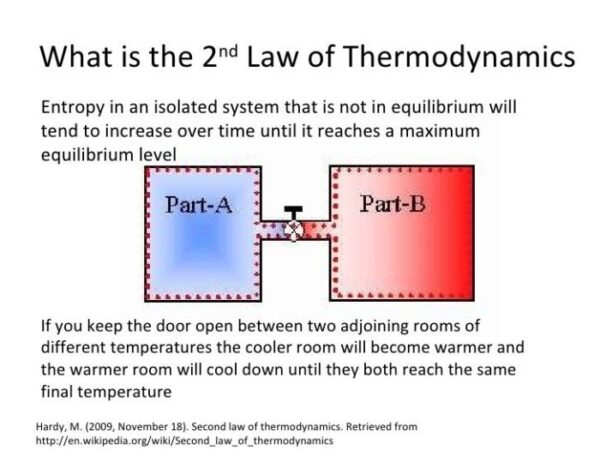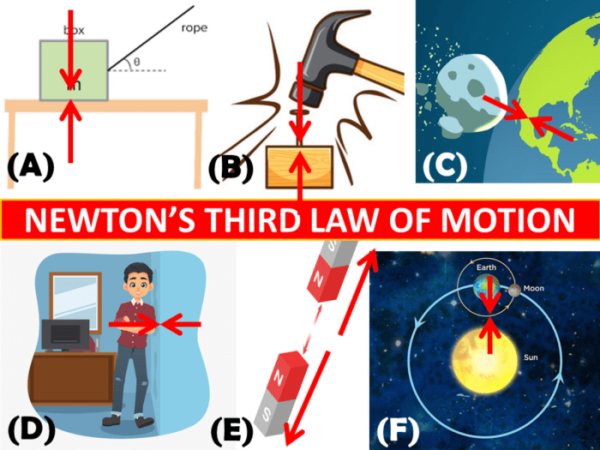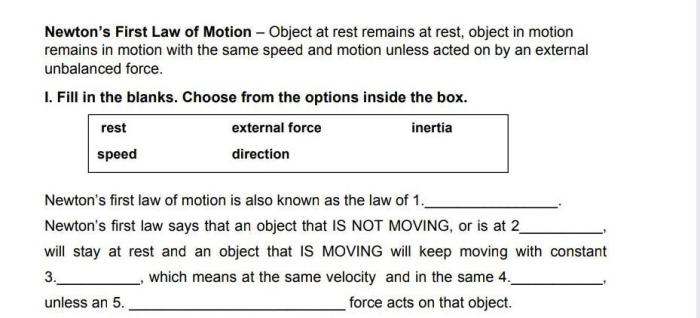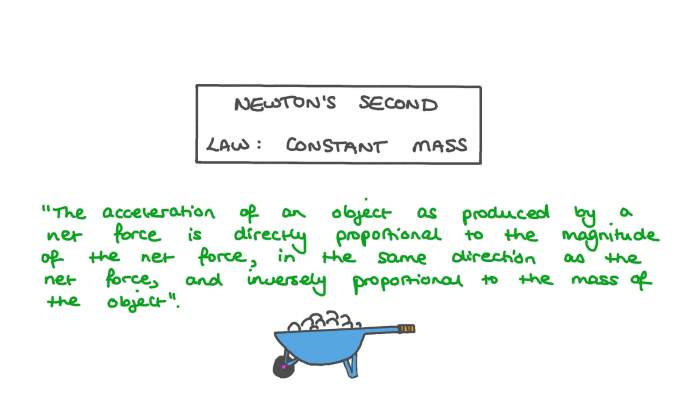
What are Newton’s 3 laws of motion? They are fundamental principles in physics that explain how objects move and interact with each other. Sir Isaac Newton, a brilliant scientist, formulated these laws in the 17th century, revolutionizing our understanding of the universe. From the simple act of walking to the complex workings of rockets, Newton’s laws provide a framework for understanding motion in our everyday world.
These laws describe the relationship between force, mass, and acceleration. The first law, the law of inertia, states that an object at rest will stay at rest, and an object in motion will stay in motion at a constant velocity unless acted upon by an external force. The second law explains how force, mass, and acceleration are connected. It states that the acceleration of an object is directly proportional to the net force acting on it and inversely proportional to its mass. The third law, the law of action and reaction, states that for every action, there is an equal and opposite reaction. This means that when one object exerts a force on another object, the second object exerts an equal and opposite force back on the first object.
Introduction to Newton’s Laws of Motion
Sir Isaac Newton, a brilliant English physicist and mathematician, revolutionized our understanding of motion with his three laws of motion. These laws, formulated in the late 17th century, laid the foundation for classical mechanics, which describes the motion of objects at everyday speeds and sizes.
Newton’s laws are fundamental to our understanding of the universe. They explain why objects fall to the ground, how planets orbit the sun, and how rockets launch into space. They are used in countless applications, from designing bridges and buildings to predicting the movement of celestial bodies.
Historical Context
Newton’s laws were developed in a period of significant scientific advancement. In the 16th century, Nicolaus Copernicus proposed the heliocentric model of the solar system, challenging the long-held geocentric view. Galileo Galilei, using his telescope, made observations that supported Copernicus’s theory. These discoveries paved the way for Newton’s groundbreaking work.
Newton built upon the work of his predecessors, particularly Galileo’s studies on motion. He realized that motion is not a random occurrence but follows specific rules. Through his observations and experiments, Newton formulated his three laws of motion, which are still considered fundamental principles in physics today.
Significance of Newton’s Laws
Newton’s laws are significant because they provide a framework for understanding the motion of objects. They explain why objects at rest tend to stay at rest and why objects in motion tend to stay in motion at a constant velocity unless acted upon by a force. These laws also explain how forces cause objects to accelerate, and how every action has an equal and opposite reaction.
These laws have profound implications for our understanding of the universe. They explain the motion of planets, stars, and galaxies. They are also used in engineering, to design bridges, buildings, and machines.
Applications of Newton’s Laws in Everyday Life
Newton’s laws are not just theoretical concepts; they are used in countless applications in everyday life. Here are some examples:
- Driving a car: When you press the accelerator, you are applying a force to the car, causing it to accelerate. When you apply the brakes, you are applying a force to slow the car down. The car’s motion is governed by Newton’s laws.
- Playing sports: Newton’s laws are essential for understanding the motion of objects in sports. For example, a baseball player uses Newton’s laws to hit a baseball, and a golfer uses them to swing a golf club.
- Riding a bicycle: When you pedal a bicycle, you are applying a force to the wheels, causing them to rotate. The bicycle’s motion is governed by Newton’s laws.
Newton’s First Law of Motion

Newton’s First Law of Motion, also known as the Law of Inertia, is a fundamental principle in physics that describes the behavior of objects in motion or at rest. It states that an object at rest will remain at rest, and an object in motion will continue in motion with the same speed and in the same direction unless acted upon by an unbalanced force.
Inertia
Inertia is the tendency of an object to resist changes in its state of motion. This means that an object at rest will stay at rest, and an object in motion will continue moving at a constant velocity unless acted upon by an external force. The amount of inertia an object possesses is directly proportional to its mass. Objects with greater mass have greater inertia, meaning they are more resistant to changes in their motion.
Examples of Inertia
- Passenger in a Car During Sudden Braking: When a car suddenly brakes, the passengers inside continue to move forward at the same speed as the car was traveling before the brakes were applied. This is because the passengers have inertia and resist the change in motion. Their bodies continue to move forward until they are stopped by the seatbelt or the dashboard.
- Pushing a Heavy Box: It takes more force to start a heavy box moving than to keep it moving at a constant speed. This is because the box has more inertia due to its greater mass.
- A Ball Rolling on a Flat Surface: A ball rolling on a flat surface will continue to roll in a straight line at a constant speed unless acted upon by a force, such as friction or gravity.
Forces and Changes in Motion
Forces are responsible for changing the state of motion of an object. A force is a push or pull that can cause an object to accelerate or decelerate, change direction, or deform. The relationship between force, mass, and acceleration is described by Newton’s Second Law of Motion, which states that the acceleration of an object is directly proportional to the net force acting on it and inversely proportional to its mass.
F = ma
This equation implies that a larger force is required to accelerate a more massive object, or to produce a greater acceleration for a given mass.
Newton’s Second Law of Motion
Newton’s Second Law of Motion describes the relationship between force, mass, and acceleration. It states that the acceleration of an object is directly proportional to the net force acting on it and inversely proportional to its mass. In simpler terms, the greater the force applied to an object, the greater its acceleration. Conversely, the greater the mass of an object, the smaller its acceleration for a given force.
Force and Acceleration, What are newton’s 3 laws of motion
Force is a push or pull that can change the motion of an object. It is measured in Newtons (N). Acceleration is the rate of change of velocity. It is measured in meters per second squared (m/s²). Newton’s Second Law explains how force and acceleration are related.
The acceleration of an object is directly proportional to the net force acting on it and inversely proportional to its mass.
This means that if you apply a larger force to an object, it will accelerate faster. However, if the object has a larger mass, it will accelerate more slowly.
Mathematical Representation of the Second Law
Newton’s Second Law can be expressed mathematically as:
F = ma
Where:
* F is the net force acting on the object (measured in Newtons)
* m is the mass of the object (measured in kilograms)
* a is the acceleration of the object (measured in meters per second squared)
This equation shows that force, mass, and acceleration are directly proportional to each other.
Relationship between Force, Mass, and Acceleration
Newton’s Second Law explains how force, mass, and acceleration are related. For example:
* A larger force produces a larger acceleration. If you push a cart with a larger force, it will accelerate faster.
* A larger mass produces a smaller acceleration. If you push a cart with the same force, but it has a larger mass, it will accelerate more slowly.
* A smaller mass produces a larger acceleration. If you push a cart with the same force, but it has a smaller mass, it will accelerate faster.
This law is fundamental to understanding the motion of objects in the universe. It is used to explain everything from the motion of planets to the movement of cars.
Newton’s Third Law of Motion
Newton’s Third Law of Motion is a fundamental principle in physics that describes the interaction between objects. It states that for every action, there is an equal and opposite reaction. This means that when one object exerts a force on another object, the second object exerts an equal and opposite force back on the first object.
Examples of Newton’s Third Law in Everyday Scenarios
The Third Law of Motion is evident in many everyday scenarios. For example, when you walk, your feet push against the ground, and the ground pushes back on your feet with an equal and opposite force. This force propels you forward. Similarly, when you swim, you push water backward with your arms and legs, and the water pushes you forward with an equal and opposite force.
Applications of Newton’s Laws
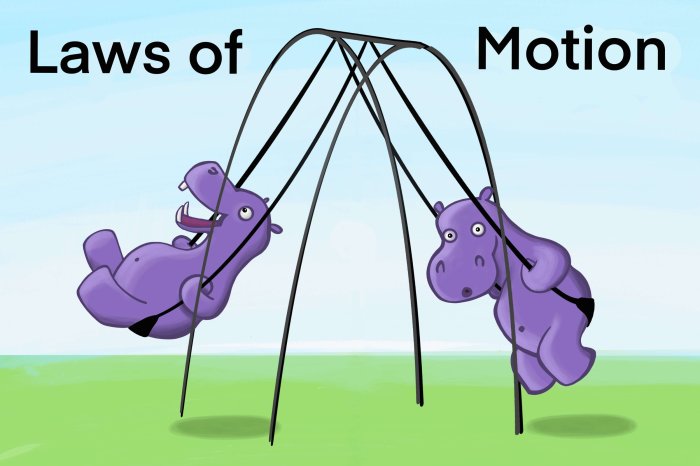
Newton’s Laws of Motion are fundamental principles that govern the movement of objects. These laws are not merely theoretical concepts; they have profound practical applications in various fields, shaping our understanding of the world around us and driving technological advancements. From the design of skyscrapers and aircraft to the analysis of athletic performance, Newton’s Laws provide a framework for comprehending and predicting the behavior of objects in motion.
Engineering
Newton’s Laws play a crucial role in engineering, forming the foundation for designing structures, machines, and systems.
- Structural Engineering: Newton’s First Law, the law of inertia, is essential for understanding the stability of structures. Engineers use this law to calculate the forces acting on buildings, bridges, and other structures, ensuring their ability to withstand external forces like wind or earthquakes. The Second Law, relating force to acceleration, helps determine the load-bearing capacity of materials and the stresses they can handle.
- Mechanical Engineering: Newton’s Laws are fundamental in designing and analyzing machines. The Second Law helps determine the forces required to move objects, while the Third Law explains the interaction between components, such as gears and pistons.
- Civil Engineering: Newton’s Laws are used in designing roads, bridges, and tunnels. For example, the Second Law is used to calculate the forces acting on a bridge due to traffic and wind loads, ensuring its stability and safety.
Aerospace
Newton’s Laws are indispensable in aerospace engineering, governing the motion of aircraft and spacecraft.
- Aircraft Design: Newton’s Third Law, the law of action and reaction, is essential for understanding how aircraft generate lift. The wings of an aircraft are designed to create a difference in air pressure, resulting in an upward force that counteracts gravity.
- Spacecraft Propulsion: The Second Law is crucial for understanding how rockets accelerate in space. By expelling fuel at high velocity, rockets generate thrust, propelling them forward.
- Orbital Mechanics: Newton’s Law of Universal Gravitation, a consequence of Newton’s Laws, governs the motion of satellites and planets around the sun.
Sports
Newton’s Laws are fundamental in sports, influencing the performance of athletes and the design of equipment.
- Running: The Second Law explains how a runner’s acceleration is proportional to the force they exert on the ground. This law is also relevant in understanding the impact of friction and air resistance on a runner’s speed.
- Jumping: Newton’s Third Law is essential for understanding how a jumper generates upward force. By pushing off the ground, the jumper exerts a downward force, and the ground exerts an equal and opposite upward force, propelling them into the air.
- Ball Sports: Newton’s Laws are fundamental in understanding the motion of balls in sports like baseball, soccer, and basketball. The Second Law helps determine the trajectory of a ball, while the Third Law explains the impact of collisions between the ball and other objects, like bats or players.
Examples and Illustrations
Visual representations can help us understand abstract concepts like Newton’s laws of motion. Let’s look at some examples to illustrate these principles.
Newton’s First Law of Motion
To illustrate Newton’s First Law, imagine a ball at rest on a smooth, frictionless surface.

The ball will remain at rest unless acted upon by an external force. This is because the ball has inertia, which is its tendency to resist changes in its state of motion. If we push the ball, it will start moving, but once the force is removed, it will continue to move at a constant velocity in a straight line. This is because there is no force acting on it to change its motion.
Newton’s Second Law of Motion
Newton’s Second Law of Motion describes the relationship between force, mass, and acceleration. The formula for this law is:
F = ma
Where:
* F is the force applied to an object
* m is the mass of the object
* a is the acceleration of the object
This law tells us that the acceleration of an object is directly proportional to the net force acting on it and inversely proportional to its mass. In other words, the greater the force, the greater the acceleration, and the greater the mass, the smaller the acceleration.

In this illustration, a force is applied to a ball, causing it to accelerate. The acceleration is directly proportional to the force applied. If we double the force, the acceleration will also double. However, if we double the mass of the ball, the acceleration will be halved.
Final Review: What Are Newton’s 3 Laws Of Motion
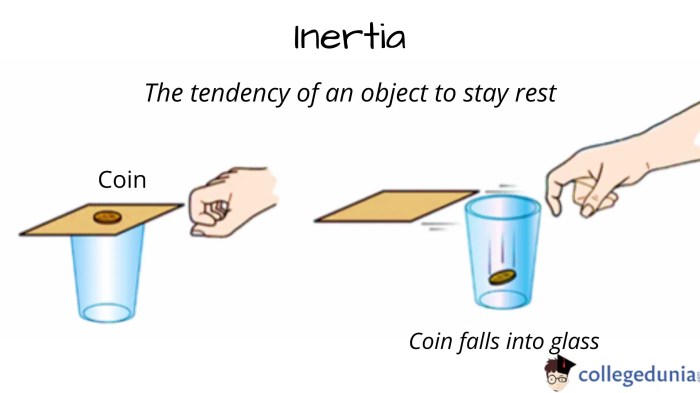
Newton’s three laws of motion are essential to understanding the physical world around us. They provide a foundation for explaining everything from the movement of planets to the trajectory of a thrown ball. These laws are applied in numerous fields, including engineering, aerospace, and sports, demonstrating their immense practical value. By understanding Newton’s laws, we gain a deeper appreciation for the intricate workings of the universe and the forces that govern motion.
Popular Questions
What are some real-world examples of Newton’s Laws?
Here are some examples:
* First Law: A book on a table will remain at rest unless a force pushes or pulls it.
* Second Law: A heavier object requires more force to accelerate than a lighter object.
* Third Law: When you jump, your feet push down on the ground, and the ground pushes back up on your feet, propelling you into the air.
Why are Newton’s Laws so important?
Newton’s Laws are foundational to many other areas of physics and engineering. They are used to design everything from cars and airplanes to bridges and buildings. They also help us understand the motion of planets and stars.
Are Newton’s Laws always true?
While Newton’s Laws are incredibly accurate in most everyday situations, they break down at very high speeds or in very strong gravitational fields. In these cases, we need to use Einstein’s theory of relativity to explain the behavior of objects.
